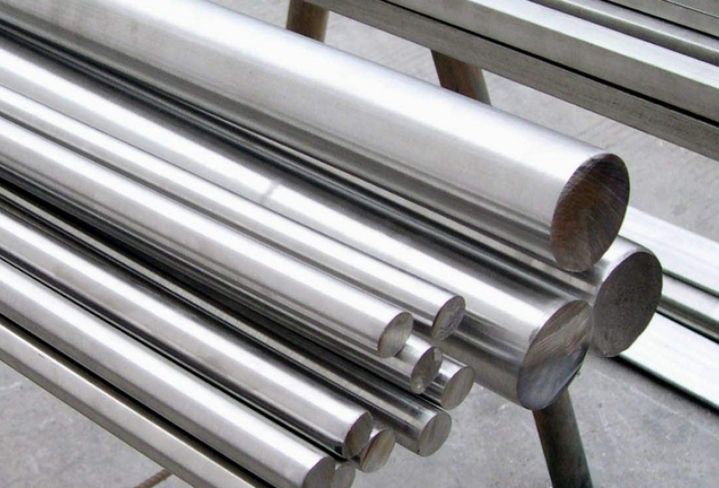Carbon steel is an alloy of iron, with a small amount (normally less than 2.1%) of other elements such as carbon or silicon, while stainless steel isn’t really an alloy at all but rather a combination of metals blended together to form something stronger than its parts. When it comes to knives, stainless steel is usually preferred over carbon steel because it is rust resistant and holds a better edge.
Is Carbon Steel Stronger Than Stainless Steel?
Carbon steel is stronger than stainless steel, as it contains a higher percentage of carbon. Carbon steel casting blades hold an edge very well but may rust if not cared for properly. By contrast, stainless steel has a lower percentage of carbon and therefore does not hold a good edge as well as carbon steel. Stainless steel knives do not require oil or salt to maintain and are easier to clean.
Stainless Steel Vs Carbon Steel Strength
The main difference between these two steels is that stainless steel doesn’t rust, corrode or stain as easily as carbon steel because it contains more chromium and nickel than carbon does. However, carbon steel holds an edge much longer than stainless and is usually preferred for knives that need to have a sharp edge as soon as possible. Because carbon steel blades can rust, they must be kept clean and dry. Overall, stainless steel is easier to maintain because it doesn’t require special care, whereas carbon steel requires more work on the part of the owner.
Difference of Applications
The difference between carbon steel and stainless steel varies greatly with applications. For instance, a stainless-steel knife is usually used in the kitchen as it is resistant to corrosion from food acids. Carbon stainless steel knives usually have an extremely long lasting edge retention which makes them ideal for professional use in the kitchen. A carbon steel knife is typically the preferred choice for a survival or tactical knife.
The primary material used in making knives is steel, and there are two main types of steel knives: carbon steel and stainless steel. Even though they both have similar properties, their major differences make them better for different purposes. For example, stainless steel is the ideal choice for use in kitchen tools like knives, as it doesn’t rust or corrode easily; whereas carbon steel is great for making tactical or survival knives, since it can hold a sharp edge easily.
Preference of People:
When it comes to preference, most people prefer stainless steel over carbon steel because of its ease of maintenance and superior resistance to corrosion. Carbon steel blades are typically more expensive than stainless ones, but this extra cost is usually offset by the fact that they tend to be less susceptible to rust.
Carbon steel knives are not suitable for everyday kitchen use, but they are often preferred by professional cooks because they can hold an edge much better than stainless steel knifes. However, carbon steel blades usually need to be re-sharpened more frequently than their counterparts.
Carbon Steel Vs Stainless Steel Price
The price of carbon steel knives typically tends to be lower than stainless steel ones. However, this is not always the case, as carbon steel knives are usually handmade while most stainless steel knives are manufactured industrially.
Carbon Steel vs Stainless Steel – Which One Is Better?

Overall, both types of steel have their pros and cons, but it usually boils down to personal preference. If you are looking for kitchen knives, stainless steel is the obvious choice due to its resistance to corrosion and ease of maintenance. On the other hand, carbon steel knives are preferred for tactical or survival applications because of their superior edge retention properties.
Carbon Steel Vs Stainless Steel Properties
Carbon steel knives need to be looked after and maintained according to the wielder’s preference, which is usually done by keeping them oiled and dry. Carbon steel blades also need more sharpening than stainless steel ones since they can hold their edge for longer periods of time. On the other hand, stainless steel is easier to maintain and doesn’t require special care.
Carbon Steel Vs Stainless Steel Composition
Carbon Steel contains 0.60 – 0.75% carbon, 12 to 1 percent chromium, and up to 2% manganese, whereas Stainless Steel is not as hard as Carbon Steel but is stain resistant. Carbon stainless steel knives usually contain at least 10-percent chromium, which is what makes them corrosion resistant.
Carbon Steel Vs Stainless Steel Edge Retention
Stainless steel knives are usually known to hold their edge for longer periods of time, whereas carbon steels tend to need more frequent sharpening than stainless ones. When it comes to straightness and durability, however, carbon steels are superior to stainless steels.
Carbon Steel Vs Stainless Steel Usage
Carbon steel knives are usually the choice for preferred tactical or survival knives, due to their ability to hold a sharp edge. Stainless steel knives are perfect for everyday kitchen use because of their resistance to corrosion and ease of maintenance.
Is Carbon Steel The Same As Stainless Steel?
Carbon steel and stainless steel are different kinds of steels, since they have unique properties and compositions. Stainless steel is a more popular choice for knives because it doesn’t rust or corrode easily; whereas carbon steel is great for making tactical or survival knives, since it can hold a sharp edge easily. Even though both types of steels have their pros and cons, it boils down to personal preference.
Conclusion:
In conclusion, both types of steel have their own pros and cons. Carbon steel is more expensive than stainless steel but can hold a sharper edge for longer. Stainless steel is cheaper and easier to maintain, but doesn’t hold an edge quite as well as carbon models do. People generally prefer one type of steel over another due to their price and overall properties. To read more about these two types of steels, visit the engineering world.
















